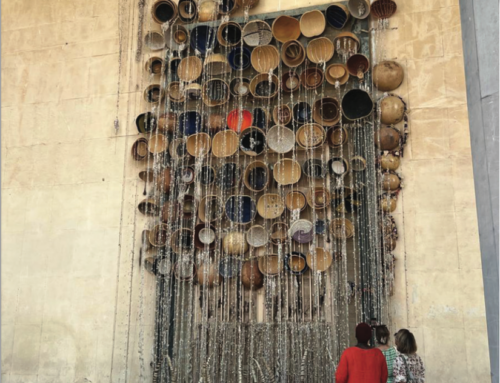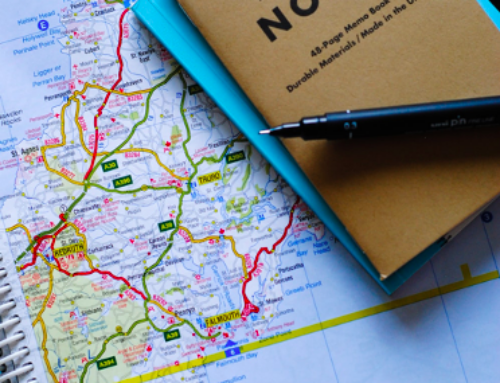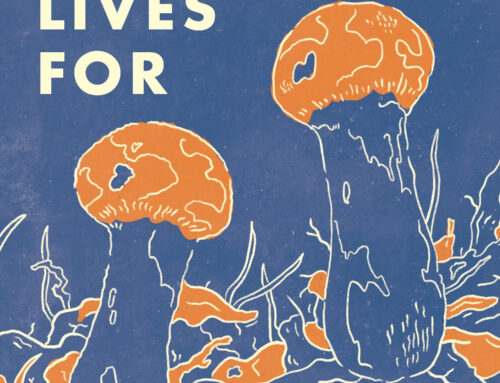AES 2015 Plenary Speaker
American Ethnologist (AE): Your work brings together many disciplines – has it always been so, or did you develop a certain interest at some point that drove you here?
Gastón Gordillo (GG): I’ve long been attracted to other disciplines aside from anthropology because I’m interested in theory, in concepts and ideas that help me better understand particular ethnographic situations. And I’ve found that reading beyond anthropology is a good way to think more conceptually, through conversations with other fields like geography, philosophy, history, or critical theory. This interest in other disciplines goes back to my undergraduate education in anthropology in the late 1980s at the University of Buenos Aires in Argentina, where I had excellent history and philosophy professors. And every since then, I’ve basically read anything that I’ve found thought-provoking, independently of the discipline. And because of my interest in space, my engagement with human geography has been particularly influential. But ultimately I see my work as profoundly anthropological and ethnographic, in the sense that I engage other disciplines from my experience as an ethnographer trying to ground conceptual questions in actual social and spatial settings.
AE: How do you feel your work transitioned between Landscapes of Devils (2004) and Rubble (2014)? Was it a continuous transition where you revised old issues with new questions in mind or did other projects arise?
GG: Transitioning between different books is never a smooth or continuous process, and in this case this transition was geographical, theoretical, and also methodological. What sets the two books apart is, first, that the ethnographies cover very different areas of northern Argentina. Landscapes of Devils is about the heart of the Gran Chaco lowlands, on the Pilcomayo River, and my ethnography for Rubble took place at the foothills of the Andes several hundred kilometers to the west. And the people I did fieldwork with are also quite different from one another, indigenous people living in villages in Landscapes of Devils and rural workers of mestizo (mixed) background working as gauchos (cowboys) at cattle ranches in Rubble. What both books share is an interest in understanding subaltern experiences of place and memory amid legacies of domination and violence. But the questions that structured both books are very different from each other. Rubble is more focused on the ruptured materiality of space, in particular the materiality of rubble and debris, and seeks to develop an ethnographic sensibility toward what I call the afterlife of the destruction of space. The book proposes to do so through an affective theory of space, that is, by looking at how particular places and clusters of ruins affect people at a bodily, non-discursive level. These are all problems and questions that are absent in Landscapes of Devils. Rubble is also based on multisited fieldwork and conceptually it’s a more ambitious book, which engages with a wider set of theories and in fact tries to find convergences between the theories of negativity that informed Landscapes of Devils and more “affirmative” and vitalist philosophies like those of Deleuze or Spinoza. The book is, in some ways, an attempt to rethink affect and materiality from a more “negative” and spatial angle, that is, sensitive to the spatial and affective impact of destructive processes on the geography, from the violence of Spanish conquest to the ongoing deforestation created by agribusiness. This led me to propose a theory of ruins as rubble that’s critical of the modernist and elite fetishization of ruins, a critique that was inspired by local people’s unglamorous sensibilities toward debris. To sum up, some of the early ideas that led to Rubble certainly came from my previous work on spatial contradictions and memory in Landscapes of Devils, but the experience of fieldwork in a totally different region and engaging new questions and other bodies of literature made me write a substantially different book.
AE: How do you interact with the work of other authors as your own work progresses? Does the way you read and intersect your own work with concepts used by other authors change over time?
GG: I’m permanently reading and engaging with new ideas, and what I choose to read is usually connected to questions or concepts I’m writing about or struggling with. I’m usually reading several books at the same time, often at a different pace, in the sense that some denser texts take me longer time to process, while I simultaneously read lighter or shorter books as well as articles. This helps me think at different levels, and I always learn from the back and forth between my own thinking and writing and the authors I’m reading. For instance, because of my new project on the concept of “terrain,” in the past few months I’ve been reading books and articles that I never thought I would be reading, by physical geographers, geologists, and military strategists who have written on terrain and also books by physicists and philosophers of physics on the materiality and geometry of space. The synergies that I found between these readings and my own thinking about the materiality of terrain and its political implications have been incredibly thought-provoking, and I’ve recently begun to write on terrain incorporating what I’ve learned from them.
AE: As you well know, the theme for the upcoming AES Meeting (San Diego, March 12th-14th 2015) is emergence. How does emergence come up in your work?
GG: In Rubble, for instance, I approach issues of emergence through the concept of generativity, which is my attempt to account for the generative or productive forces created by the absences and ruptures associated with rubble. I tried to show through the ethnography how legacies and memories of destruction and violence can generate particular affective dispositions and novel spatial configurations around rubble, for instance religious processions or experiences of haunting and apprehension. More recently, I’ve been thinking about emergence by drawing from Alain Badiou’s ontology of appearance and disappearance. Badiou says something crucial that may sound intriguing at first, which is that existence is not a category of being but of “appearing.” For instance, Badiou argues that what distinguishes an event like a revolutionary insurrection is that it appears at a certain time and space in the physical, ontological sense of the word. That is, prior to the insurrection, this political event didn’t exist. This is why Badiou says that the “being” of such events “appear.” And this appearance is a powerful expression of political emergence. But once an insurrection peaks, its force dissipates as an apprehensible materiality on the streets. The Egyptian insurrection of 2011, for instance, was an emergent force that “appeared” in the streets in ways that had a profound political impact. But this emergence faced a brutally repressive violence, and almost four years later has been contained by the terror imposed of the current military regime. But while the revolution failed in its goal to democratize Egypt and create a more egalitarian society, its generativity is still there as an emergent potentiality. The emergence created by the insurrection also generated, if in a reactive way, the current dictatorship ruling Egypt. So I’m using Badiou’s philosophy to try to think the emergent forces associated for instance with insurrections not as a linear process but as a fluctuating, unstable becoming defined by ruptures and also by collective appearances that may dissipate but also return, like the appearance and disappearance of massive multitudes on Tahir Square. These are topics I have written about especially on my blog Space and Politics, which in the near future I hope to revise for a book on the affective and spatial materiality of insurrections, tentatively entitled Resonance and Revolution.
AE: How have your theoretical perspectives changed in your work? What new theoretical perspectives are you taking on?
GG: Badiou’s philosophy, while it’s very complex and demanding, has been very influential in my most recent work, as I think was clear from my previous answer. His ontology of pure multiplicity and also his conceptualization of the void have a clear presence in Rubble, for I see rubble as a material figure of multiplicity. The very idea of rubble, for instance, evokes an uncountable multiplicity of broken objects, but rubble is also the most tangible expression of the idea of the void, as something that has been so thoroughly destroyed that evokes an unsettling absence. But with Badiou, I don’t see the void as nothingness but as a positive negativity, hence the power of rubble to affect and unsettle people and institutional actors in different ways. This is a major theme in Rubble. In my work on terrain I’m developing what I see as a materialist and political theory of space in terms of its forms, textures, volumes, and temporal rhythms. This is forcing me to engage with recent theoretical developments that have examined objects from a new angle, aware of the limitations faced by the social constructivist views of matter. So I’ve been reading authors working on object-oriented ontologies, speculative realism, and new approaches to materialism. While I’m critical of their sometimes apolitical take on materiality, these perspectives expanded my thinking onto what was for me uncharted territory. To give you an example, I’m currently interested in examining how the forms, heights, and verticality of a mountain range affect and constrain mobility and visibility in situations of warfare. In this context, the pull of gravity amid the mountain’s verticality is a powerful physical force that is key to understanding the geometry of combat in those terrains. And this is a dimension of the planet’s terrain, gravity, that cannot be reduced to what humans make of it. If we fall off a cliff we die, even if we were born and raised in those mountains. These physical dimensions of terrain that impose powerful constrains on human action, and that have clear political implications, have not been theorized deeply enough in the humanities. We take terrain for granted as something so obvious and natural in our engagement with the materiality of space that we haven’t thought hard enough about it. So that’s one example of the theoretical perspectives on the physics of space I’ve been examining in my project on terrain.
AE: You mentioned that you also write on your own blog, Space&Politics. How is that different from your academic work and how does it affect it?
GG: Writing on my blog has been crucial to developing my own ideas along new lines. My current project on terrain and my interest in the affective materiality of insurrections were first forged in posts on the blog. And because I intentionally write for a wide audience, this has furthered the trans-disciplinary perspective that I referred to earlier. The more informal setting, and the fact that I write about whatever comes to mind, has also helped loosen my own writing style. The writing style in Rubble, while academic, flows better, I think, because of the experience of the blog. I basically see my blog as the informal workshop where I test my early ideas about a particular project, and as the public space where I can get very quick feedback from people and bloggers that I would otherwise never interact with. The temporality of blogging is particularly stimulating, for it makes you develop and try your own ideas at a faster pace. As we know, the temporality of academic publishing is extremely slow and frustrating in that regard. I continue publishing academic pieces and books, but I usually first post some of the early drafts of future academic articles on the blog in order to get feedback prior to doing a formal submission, and also in order to let my own ideas sediment in writing for a few months before developing them further.
AE: In some of your previous answers and in your new book, Rubble, you discuss the concept of terrain– how did you get interested in it and how can this concept help young scholars?
GG: I got interested in terrain because of my previous research on the materiality of space and rubble. What to me is key about “terrain” is that this is the most material term we have to name space in its three-dimensional dimensions and physical texture. But there’s very little theorization on this concept, which is usually used in a descriptive, colloquial way. I’m now beginning to work on the first draft of a book on terrain, which I see as a theoretical book that compares and analyzes different types of terrains, from mountains to jungles to urban terrains. While it won’t be a book based on ethnographic research, several chapters will draw from my personal experiences engaging with different terrains, from the forests of the Chaco to the mountains of Patagonia. In Rubble I do write about terrain, but I decided to leave aside my theorizations on the concept, for I felt that they would distract from my main argument about rubble. Yet the foundations of my thinking on terrain are there. Terrain can helps us think of space differently for many reasons. Like I said before, one clear example is the impact of terrain in warfare, in the sense that the forms and texture of terrain can have a decisive impact in military confrontations. From the mountains of Cuba to those of Afghanistan or the jungles of Vietnam, the forms and textures of the topography have had actual political and territorial implications, and I’m interested in analyzing this question in more depth. Seeing space from this perspective, as terrain with shapes and volumes, can help us appreciate the spatiality of politics from new angles. The same applies, for instance, to the impact of climate change on the materiality of the planetary terrain, which is not simply changing weather patterns but the spatial and physical texture of the planet. The intensification of droughts, floods, and the disappearance of glaciers are not transforming “space” in the abstract but the tangible texture of actual terrains. In other words, an approach toward space as terrain can open up rich venues for research among new generations of scholars concerned with the materiality of social, political, and environmental processes.
AE: Tell us more about the workshop you will be holding at the 2015 AES Meeting in San Diego and its format.
GG: The workshop will have an informal and, more importantly, a mobile format, for the main idea is to think about space while engaging with the actual geography of the city of San Diego. The main premise is to discuss, while walking on the streets, how the categories of “place,” “territory,” “terrain,” and “rubble” can help us understand distinct dimensions of San Diego’s spatiality. It’ll be a totally improvised walk with an ad-hoc trajectory, not unlike the dérives or unplanned urban journeys devised in the late 1950s by the Situationist International. This means that the workshop won’t be a traditional historical tour at all, for the point is to try to make sense, spatially speaking, of the geography we spontaneously encounter in our walk. First, we’ll be identifying, and analyzing, places, that is, spatial nodes with noticeable social and cultural dimensions. We’ll also look for markers of territory: the political technologies through which space is organized, segregated, and ruled, particularly by state agencies. We’ll also observe and analyze the three-dimensional architectural layout and infrastructure of the urban terrain. Finally, we’ll look for rubble and other expressions of decay: the traces of the destruction and ruination that contributed to producing the city we know today. The goal is to appreciate how these four concepts, while different from each other, are all important to understand the social, historical, and material dimensions of any geography. I’m really looking forward to this workshop, which I think could be a great exercise in thinking spatially in relation to actual places while walking through them and engaging in informal conversations.




